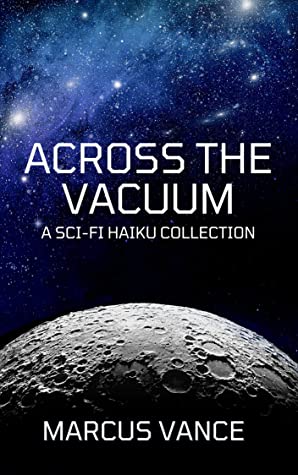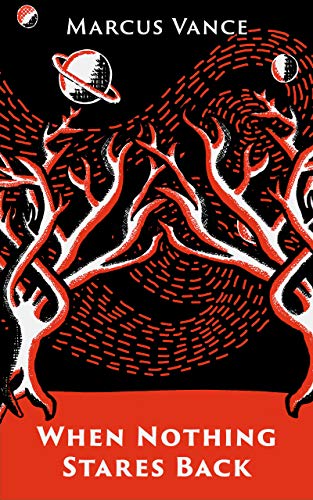If taking the enormity of sci-fi worldbuilding and focusing it down into a few short phrases seems as impossible as faster-than-light travel, you might want to check out Across the Vacuum: A Sci-Fi Haiku Collection by author Marcus Vance. If you haven’t followed Vance on Twitter yet, you should. He loves talking science fiction, fantasy, and past-future technology, including weaponry.
Recently, he chatted with Recursor about his poetry and more.
RECURSOR: What was the first moment you found yourself drawn to science fiction/fantasy?
VANCE: The first novel I remember reading was The Magician’s Nephew by C.S. Lewis when I was nine or so. That made me want to devour the Narnia series, and even Out of the Silent Planet—though that one was well beyond me at the time. So that moment when I was nine, reading about magic at our brightly lit kitchen table… That was when the first domino fell over.

Which works/creators have been most formative to your own art?
I think every book I read or other media I consume has at least one point where I say: “Oh, this is neat.” Then that goes in my pocket. Though a few lectures (free on YouTube) by Brandon Sanderson and Mary-Robinette Kowal have really helped me level up my writing.
Let’s face it – it’s unusual to find someone writing sci-fi themed haiku. And haiku is a tough form to master. What intrigued you about melding these two genres?
It’s one of those things that seems incredibly niche, yet there is a Science Fiction Poetry Association with a number of awards. The Submission Grinder counts 39 paying markets for poetry. However, it’s difficult to get into some of those places with a three-lined haiku.
As to what led me there, I’ve dabbled in haiku for a while. I think my first exposure to the sci-fi variant was stumbling across a “scifaiku” journal printed by the same small press that published a story of mine. I decided to give it a shot.
Was this a new foray for you?
Not exactly new. One of my first publications was in The Haiku Journal, and about 10% of the poems in Across the Vacuum have been previously published in places like Star*Line (the SFPA’s newsletter).
How do you manage to tackle sci-fi related concepts – which are typically “oversized” – in short forms like haiku and flash fiction?
Haiku are about capturing moments of time. One tool they use is the “kigo,” a seasonal reference. If I mention yellow leaves… *Boom* — You know exactly what season the poem is supposed to capture.

When telling a sci-fi poem, I find that it’s useful to find a known sci-fi concept as an anchor. I don’t go into how a faster-than-light jump drive works, but the concept of “jump” will click with many science fiction fans and conjure images of Star Wars or Star Trek.
Do you plan to stick to short forms? Or do you have plans to work on longer forms too?
I’m currently working on longer short stories, and even a novel. I really want to be a novelist, but the appeal of having a finished product after a few minutes or a few weeks is strong.
You’re well-known on Twitter for talking about weapons and how they could be more realistically extrapolated for different SFF scenarios. What brought about your interest in that topic?
It’s a really fun way to consider both the past and the future together. I like history, and I like imagining where things will be based on that.
What do you think SFF writers tend to overlook when it comes to the weapons they have their characters carrying? What do they get wrong/right?
I find that many writers (text and screen) don’t take armor into consideration enough — though that’s more in film and television. What people get right is imagining cool new sci-fi weapons or ways to weaponize magic. There’s a cool new concept every year.
What do you consider the coolest piece of SFF weaponry you’ve ever seen or read about?

One weapon that comes to mind is the military rifle from Scalzi’s Old Man’s War. It’s been a while since I read it, but the ammunition was a box of nano-machines, I believe. The soldier could link up with the weapon and make it fire any sort of projectile that was needed. A bullet, shotgun spread, rocket, or more. Essentially the Lawbringer from Judge Dredd, but explained.
Now that the haiku book is out, what’s your next project in the works?
After release, my big project has been taking a break, tackling an upcoming move, and more. Aside from that, I’m working on short stories, more poetry, and even a novel.
Where are the best places for people to connect with you and find your works?
Mostly Twitter, @MarcusCVance. Though I post on a blog pretty infrequently.
Is there anything I haven’t asked, but that you’d like to mention?
I can’t think of anything. If anyone reading this has read Across the Vacuum, I’d love to know what you thought!